Planting Herbs is the First Thing to
do When Starting a Garden
Planting herbs is always the first thing I do when I move and start a new garden. It's also the first thing I recommend to clients who like to cook, no other garden project gives you a higher payoff for your effort.
|
© Steve Masley…Click IMAGE to Enlarge |
- Are easy to plant and grow
- Have few pests or diseases
- Produce quickly and abundantly
- Grow well in containers
- Feed pollinators and other beneficial insects, and
- Are ridiculously expensive to buy in stores, given how productive the plants are and how easy they are to grow organically.
A basic herb garden contains Perennial Herbs like oregano, thyme, marjoram, sage, and rosemary, as well as Annual Herbs like basil, dill, cilantro, fennel, summer savory, and parsley.
Perennial and annual herbs have differing soil, water, and cultural needs, so it’s usually best to group perennials herbs together in border areas, and plant annual or biennial herbs as companion plants in the vegetable garden.
Annual Herbs
|
Perennial Herbs
|
Planting Herbs in Containers
Growing Herbs for Beneficial Insects
Annual Herbs
|
…Click IMAGE to Enlarge |
Annual herbs (and biennial herbs grown as annuals, like parsley) grow best under almost the same conditions as vegetables. They’ll thrive in any good, fast-draining garden loam.
They may need a little less nitrogen and a little less water than vegetables, but they’ll do fine in an organic vegetable bed.
Soil Needs for Planting Herbs (annual): Most annual herbs like a rich soil. Maybe not quite as rich as vegetables need, but close enough so they can be planted in the same beds.
|
Herb Pages |
|---|
|
|
|
|
|
|
When planting herbs, amend the soil with a 2-3” (5-8cm) layer of garden compost or a 1-2” (2-5cm) layer of composted manure when you prepare the bed. Mix the organic matter into the soil with a shovel or hoe, or till it in.
If you use compost instead of manure when planting herbs, you may want to add an organic nitrogen source like alfalfa or soy meal (4-8lbs/100 sq ft) [1.8-3.6kg/3 sq meters] for heavier feeders like basil or dill.
Watering: As a general rule, annual herbs do best when they have regular water—1-1.5” (2-4cm) per week. However, a larger root system produces larger plants, and regular water encourages shallower roots.
|
Way Basil Pairs with Tomatoes © Steve Masley…Click IMAGE to Enlarge |
Some drought stress can cause plants to dig deeper into the soil for water, extending their root system. This is particularly true for basil and dill. But be cautious withholding water from cool-season herbs like dill and cilantro.
If the temperatures are cool, withholding water can help extend their root systems, but the combination of drought stress and high temperatures will cause them to bolt. See Fall Vegetables for a discussion of the varying water needs of cool-season and warm-season vegetables.
Fertilizing: If you follow the soil recommendations for planting herbs, most annual herbs won’t need additional fertilizer. Basil that’s heavily clipped can benefit from additional fertilizer. See Growing Basil for more information.
Top of Page
|
Annual Herbs
|
Perennial Herbs
Herbs in Containers
|
Herbs for Beneficial Insects
Perennial Herbs
Perennial herbs like oregano, thyme, sage, and rosemary are probably the easiest and most prolific herbs to grow. These resilient plants are the best bang for the buck in the garden. With a little effort at planting time, they’ll produce fresh herbs for years.
When planting herbs, always remember perennial herbs need good drainage, especially in clay soils and high-rainfall areas.
Without good drainage, root rots set in, and the plants languish and die. To improve drainage, incorporate fine lava rock, perlite, coarse sand, or fine gravel, and add some garden compost to the planting hole.
Perennial herbs usually thrive in sandy soils, but can benefit from the addition of good garden compost or composted manure at planting time, or as a top-dressing around existing plants.
Planting Herbs: Perennial Herbs
Dig a hole twice as wide and twice as deep as the pot the plant came in. A good planting hole lets the roots penetrate deeply and is the foundation for future growth. Backfill the hole with about 1/3 of soil you removed, then amend the soil in the bottom of the hole as follows:
- For Clay Soils: Make a 50-50 mix of coarse materials (fine lave rock, perlite, coarse sand, or fine gravel) and good garden compost, composted manure, or a combination of the two. The amount should be about 1/3 to 1/2 of the volume of the soil removed from the hole. See Improving Clay Soil for ways to fix drainage issues in clay soil.
- For Sandy Soils: Use straight garden compost, composted manure, or a combination of the two. Again, the amount should be about half the volume of the soil removed from the hole. See Gardening in Sandy Soil for ways to improve water retention in sandy soil.
Add amendments to the soil in the hole, bringing the level up past the halfway point. Hoe them in, or mix with a shovel. Shovel the rest of the soil you removed back into the planting hole, add the rest of the amendments, and mix the layers with a hoe or shovel.
You’ll probably have a small mound where the hole was (the soil will be higher than it was before). This is not a problem, it will settle.
Dig a hole in the middle of this mound that’s slightly wider and deeper than the pot the plant came in. If the soil is stable enough to allow you the make the hole slightly wider at the bottom than it is at the top, do so.
Form a cone-shaped mound in the middle of the hole that comes up about 1/3 of the way; press with your hands to firm it. This will help support the root crown of the plant, and keep it from sinking as the soil around it settles.
Remove the plant carefully from its container. If the roots are coiled around the bottom or sides of the pot, loosen them with the tines of a fork to release them from root-bondage. Don’t worry if you break some roots. A little root damage is better than a compressed root-ball.
Place the plant on top of the cone in the bottom of the hole, and arrange the roots around the cone. The crown of the plant should be flush with the top of the mounded surface.
Scoop out a shallow ring-shaped basin a few inches away from the stem of the plant, and fill it with water. Let it drain and fill it again. Repeat several times for deep planting holes. Make sure the root zone is saturated.
Apply an inch of mulch around the base of the plant, scraping it back so it’s not in direct contact with the stem.
Perennial herbs do best with deep, infrequent watering
Water regularly for the first couple weeks, until the plants are established. Then shift to a deep-watering regime.
Give them a good, thorough soaking, then let them dry back for a couple of weeks. This encourages a deep root system that keeps the plants healthy and strong.
Top of Page
|
Annual Herbs
|
Perennial Herbs
Herbs in Containers
|
Herbs for Beneficial Insects
Planting Herbs in Containers
|
in a Window Box with Lettuces ©Steve Masley Click IMAGE to Enlarge |
Growing herbs at home is easy, even if you don’t have a plot of land. Many herbs—like oregano, thyme, rosemary, and sage--are tough, resilient plants that can thrive in pockets of soil on rocky cliffs. They can survive occasional lapses in the gardener’s attention.
This makes them great plants for cooks, beginning gardeners, and growing in containers. If they wilt from lack of water, just give them a good soaking, and they’ll usually bounce right back.
|
Growing in a 4-gallon Pot ©Steve Masley Click IMAGE to Enlarge |
Growing herbs in containers is easy, and remarkably productive. Even if you have a garden, planting herbs in containers means you always have fresh parsley, basil, dill and chives growing right outside your kitchen. Any time you need a few leaves to spice up a dish, you can go out and snip them right off the plant.
Top of Page
|
Annual Herbs
|
Perennial Herbs
Herbs in Containers
|
Herbs for Beneficial Insects
Planting Herbs for Beneficial Insects
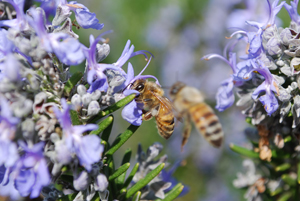
|
|
© Steve Masley…Click IMAGE to Enlarge |
In organic gardens, herbs are indispensable companion plants for vegetables. Their fragrant foliage jams the radar of garden pests, making it harder for them to find your vegetables.
Herb flowers provide nectar sources for beneficial insects, and the lacy foliage of umbellifers —like dill, fennel, cilantro, and parsley—provides ideal habitat for ladybugs and other beneficial garden insects, even on an apartment balcony.
See Attracting Beneficial Insects for more information on using herbs and other plants to recruit these garden allies.
Annual Herbs
|
Perennial Herbs
|
Planting Herbs in Containers
Herbs for Beneficial Insects
|
Basil
|
Cilantro (Coriander)
Chives
Copyright © 2009-2025, by Steve Masley, Grow-it-Organically.com
All rights reserved
HOME | About Us | Contact Us | Privacy
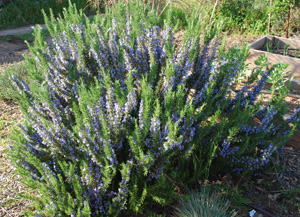

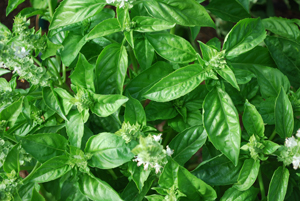
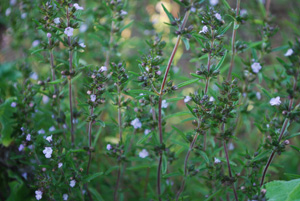
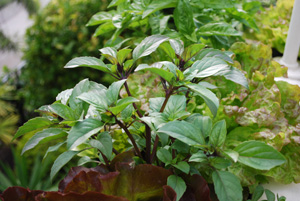
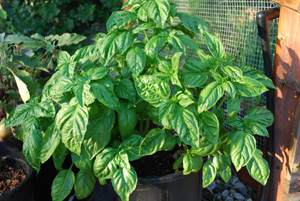
New! Comments
Have a question or comment about what you just read? Leave me a comment in the box below.